List of pests and diseases of roses on:
[Wikipedia]
[Google]
[Amazon]

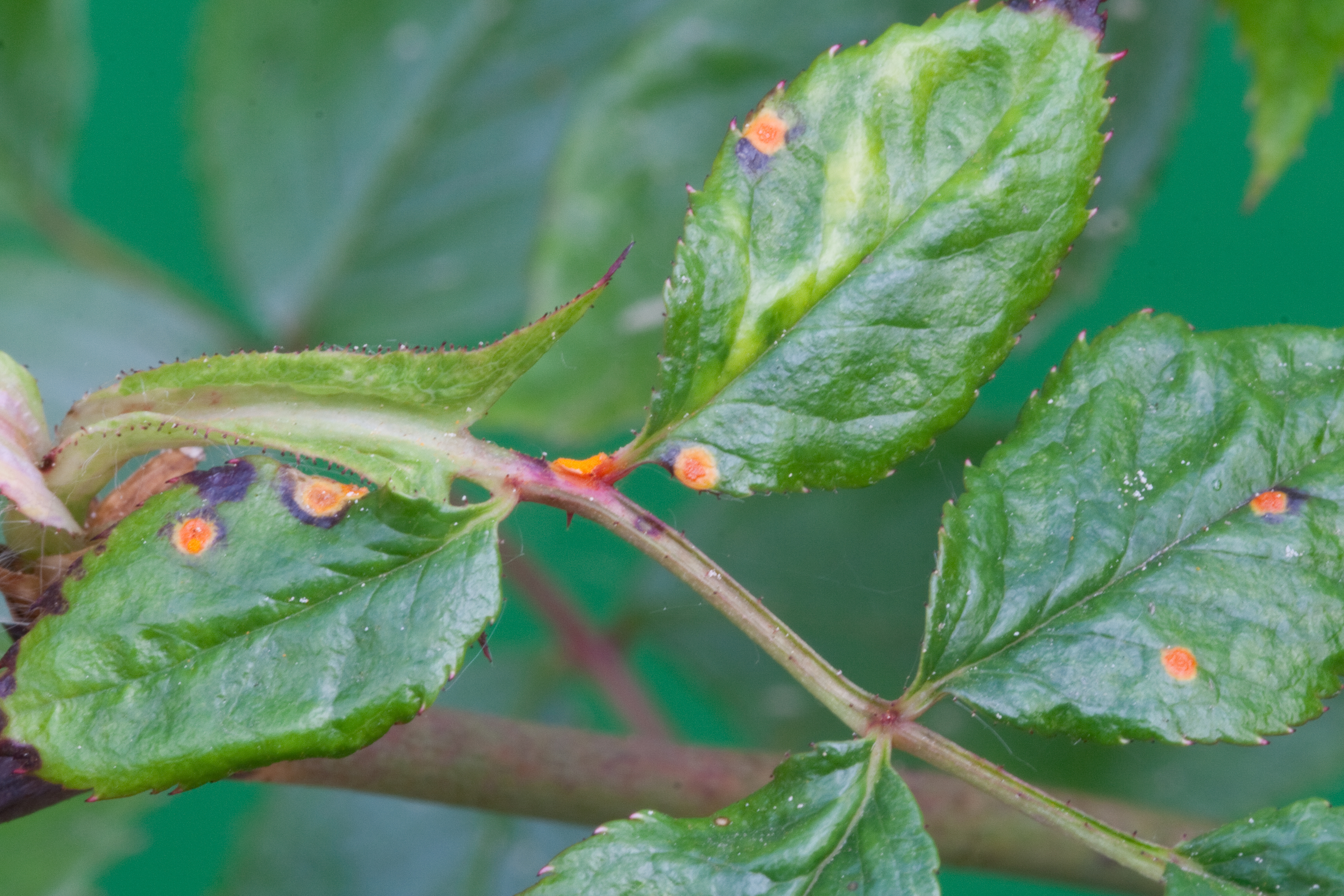

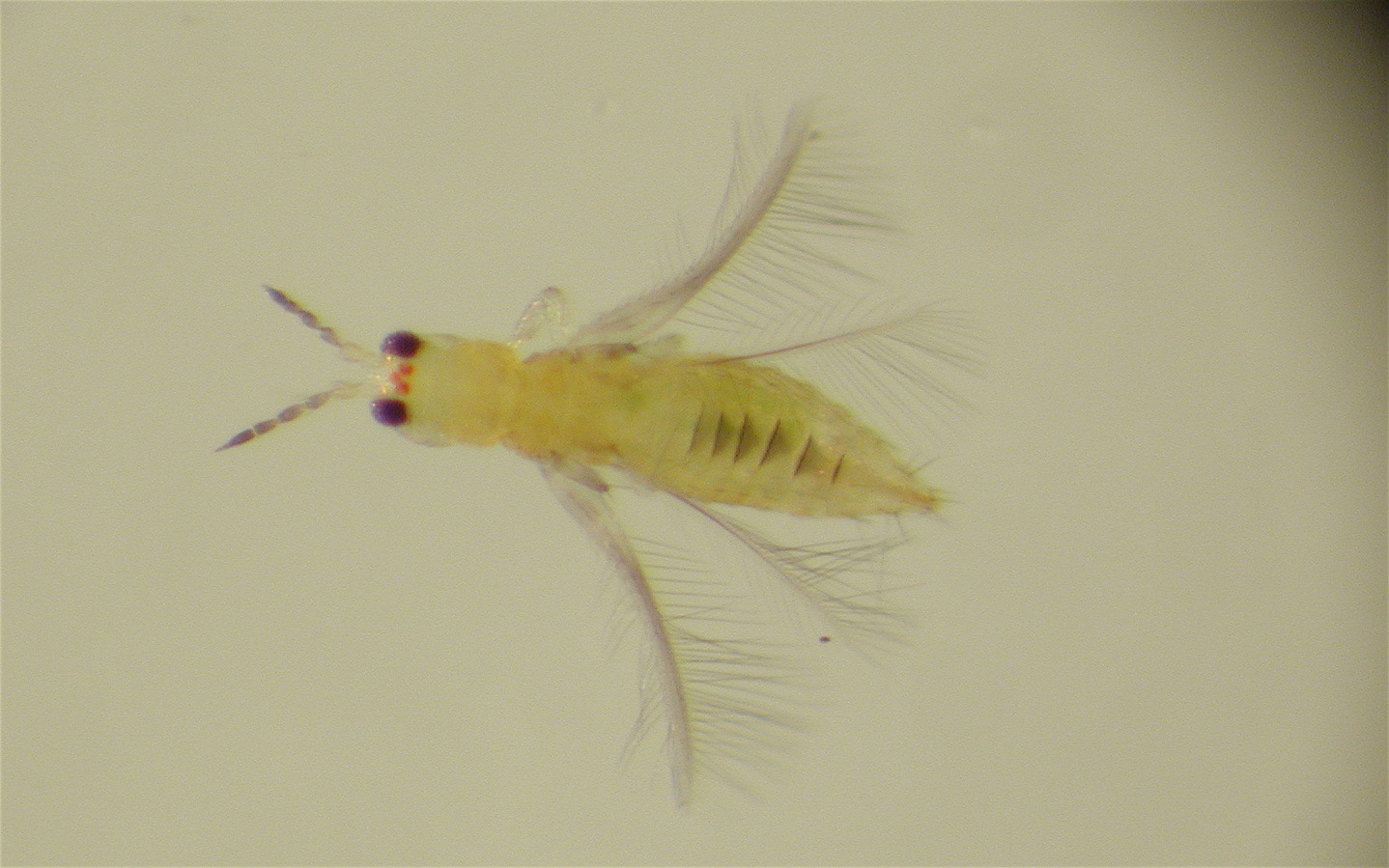


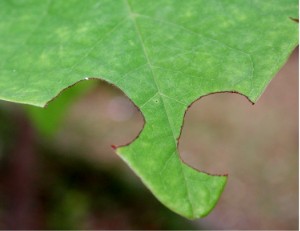


/ref> The bristly roseslug (''
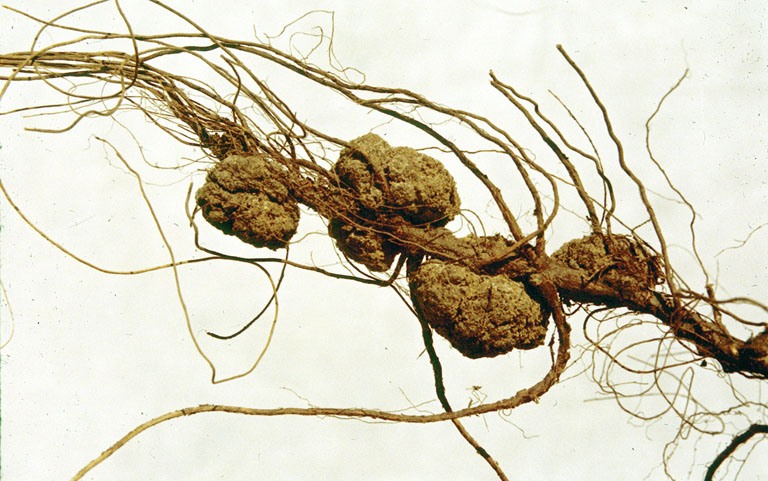 * Crown gall rot (class
* Crown gall rot (class
 * Black spot (class
* Black spot (class  * Powdery mildew ('' Podosphaera pannosa'') – ''P. pannosa'' produces a very fine, powdery coating on the surface of buds and leaves. Significant cases have stems and particularly thorns, infected. Attacks on young leaves and buds will cause deformity with retardation of growth. Infected buds will fail to open. The disease is likely in hot, humid weather, with fungal spores overwintering on the stems and fallen leaves.
*
* Powdery mildew ('' Podosphaera pannosa'') – ''P. pannosa'' produces a very fine, powdery coating on the surface of buds and leaves. Significant cases have stems and particularly thorns, infected. Attacks on young leaves and buds will cause deformity with retardation of growth. Infected buds will fail to open. The disease is likely in hot, humid weather, with fungal spores overwintering on the stems and fallen leaves.
*  *
* 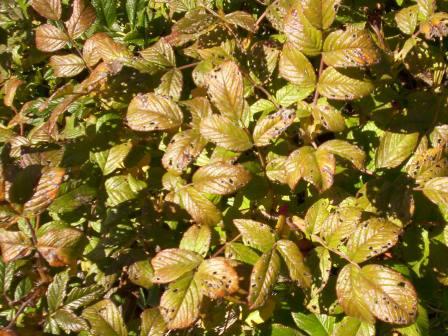 *
*
 Plant-parasitic nematodes include several genera and can be detrimental to plants - from attacking plants, acting as vectors spreading plant viruses to
Plant-parasitic nematodes include several genera and can be detrimental to plants - from attacking plants, acting as vectors spreading plant viruses to
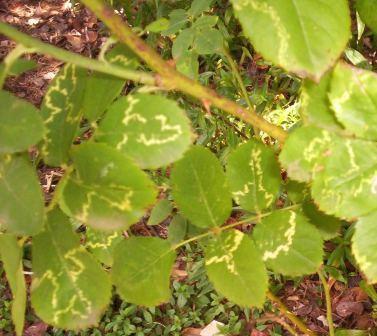 * Rose mosaic – This
* Rose mosaic – This
that is transmitted by an
in the shrub ''
(''See also
Texas A&M University Rose Breeding and Genetics Program
has made efforts to find resistance in commercial cultivars. Further efforts has identified ''Rose rosette emaravirus'' resistance in both diploid and tetraploid levels.
 * Frost will destroy fresh growth causing stems and leaves to wilt, turn black and fall away from the plant. Timing pruning to promote growth after the threat of frost is a means to avoid frost damage.
* Salinity will present in roses as limp and light brown leaves with dry leaf margins. Soil may require testing to determine salinity levels. Symptoms will present if salinity is greater than 1200 parts per million.Ross, D.,''Rose-growing for Pleasure'', Lothian Publishing, Melbourne, 1985, pp. 26
* Herbicide damage – Overspray or soil leaching of herbicidal sprays can present with several symptoms:
:Prolonged exposure to overspray of
* Frost will destroy fresh growth causing stems and leaves to wilt, turn black and fall away from the plant. Timing pruning to promote growth after the threat of frost is a means to avoid frost damage.
* Salinity will present in roses as limp and light brown leaves with dry leaf margins. Soil may require testing to determine salinity levels. Symptoms will present if salinity is greater than 1200 parts per million.Ross, D.,''Rose-growing for Pleasure'', Lothian Publishing, Melbourne, 1985, pp. 26
* Herbicide damage – Overspray or soil leaching of herbicidal sprays can present with several symptoms:
:Prolonged exposure to overspray of

Common Names of Diseases, The American Phytopathological Society
{{Rose Roses








Rose
A rose is either a woody perennial flowering plant of the genus ''Rosa'' (), in the family Rosaceae (), or the flower it bears. There are over three hundred species and tens of thousands of cultivars. They form a group of plants that can be ...
s (''Rosa'' species) are susceptible to a number of pests, diseases and disorders. Many of the problems affecting roses are seasonal and climatic.Ross, D.,''Rose-growing for Pleasure'', Lothian Publishing, Melbourne, 1985, pp. 27 Some varieties
Variety may refer to:
Arts and entertainment Entertainment formats
* Variety (radio)
* Variety show, in theater and television
Films
* ''Variety'' (1925 film), a German silent film directed by Ewald Andre Dupont
* ''Variety'' (1935 film), ...
of roses are naturally more resistant or immune than others to certain pests and diseases. Cultivation requirements of individual rose species and cultivar
A cultivar is a type of cultivated plant that people have selected for desired traits and when propagated retain those traits. Methods used to propagate cultivars include: division, root and stem cuttings, offsets, grafting, tissue culture ...
s, when observed, often assist in the prevention of pests, diseases and disorders.Botanica's Organic Gardening, Random House Publishing, Sydney, 2002,
Pests
Insects that affect roses are often considered pests. *Aphids
Aphids are small sap-sucking insects and members of the superfamily Aphidoidea. Common names include greenfly and blackfly, although individuals within a species can vary widely in color. The group includes the fluffy white woolly aphids. A t ...
(greenfly) (order Hemiptera family Aphididae) '' Macrosiphum rosae'' – Likely to be found on new shoots and buds, aphids are soft bodied insects 1-2 mm long. Often green but occasionally light brown, and sometimes with wings, they may cover (in a colony) the complete growing tip of the plant. Aphids are most active in spring and summer and multiply at a prodigious rate feeding on the sap
Sap is a fluid transported in xylem cells (vessel elements or tracheids) or phloem sieve tube elements of a plant. These cells transport water and nutrients throughout the plant.
Sap is distinct from latex, resin, or cell sap; it is a separ ...
of the plant by piercing the plant cells via a proboscis
A proboscis () is an elongated appendage from the head of an animal, either a vertebrate or an invertebrate. In invertebrates, the term usually refers to tubular mouthparts used for feeding and sucking. In vertebrates, a proboscis is an elong ...
. In large quantities they may seriously retard the growth of the plant and ruin buds. They are particularly damaging to the new shoots with subsequent damage to the emerging leaves which become malformed with much the same appearance as leaf-curl in peaches.Ross, D.,''Rose-growing for Pleasure'', Lothian Publishing, Melbourne, 1985, pp. 28
* Two-spotted mite (spider-mites or red spider mite) (order Acari
Mites are small arachnids (eight-legged arthropods). Mites span two large orders of arachnids, the Acariformes and the Parasitiformes, which were historically grouped together in the subclass Acari, but genetic analysis does not show clear evid ...
: family Tetranychidae) ''Tetranychus urticae'' – Previously known as red-spider mite these arachnids prefer the underside of leaves and are difficult to see with an unaided eye. Evidence of their presence is silvering of leaves where the mites have destroyed individual leaf cells. Fine webbing and eggs on the undersides of leaves is further evidence of the presence of ''Tetranychus urticae''.
* Thrips
Thrips (order Thysanoptera) are minute (mostly long or less), slender insects with fringed wings and unique asymmetrical mouthparts. Different thrips species feed mostly on plants by puncturing and sucking up the contents, although a few are ...
(order Thysanoptera
Thrips (order Thysanoptera) are minute (mostly long or less), slender insects with fringed wings and unique asymmetrical mouthparts. Different thrips species feed mostly on plants by puncturing and sucking up the contents, although a few are ...
) – Thrips are slim-winged insects 1 mm in length, resembling fine slivers of wood or rice. Preferring light-coloured blooms and often appearing in plague numbers, flowers are often left looking scarred, warped, and lustreless.McMaugh, J. What garden pest or disease is that?, New Holland Publishing, Sydney, 2001
* Rose slugs (rose sawflies) - Sawflies
Sawflies are the insects of the suborder Symphyta within the order Hymenoptera, alongside ants, bees, and wasps. The common name comes from the saw-like appearance of the ovipositor, which the females use to cut into the plants where they lay ...
are non-stinging wasps ( Hymenoptera) in the suborder '' Symphyta'', not flies ( Diptera). They lay eggs in plant leaves or stems with a saw-like ovipositor. There are three species that commonly cause damage to wild or cultivated roses: Baldo's Sacramento Rose Society Website: Rose Sawflies/ref> The bristly roseslug (''
Cladius difformis Cladius may refer to:
* ''Cladius'' (sawfly), a genus of sawflies in the family Tenthredinidae
* Cladius Detlev Fritzsch (1765–1841), Danish painter
* Cladius Labib (1868–1918), Egyptian Egyptologist
See also
* Claudius (disambiguation)
Cla ...
'') is found in Europe, Siberia, and many areas of North America. The larva is pale green, up to long, and covered with hairlike bristles all over its body. It looks like a caterpillar but that term, strictly speaking, only applies to the larvae of moths and butterflies. It skeletonising the underside of leaves, with several generations per year. The European roseslug ('' Endelomyia aethiops'') is found in North America and Europe. The larvae is more slug like (but not slimy), up to , and skeletonises the upper surface of leaves with only one generation per year. The curled roseslug ('' Allantus cinctus'') larva is pastel green on the back, marked on the thorax and abdomen with white dots, and up to long. It frequently coils up like a snake. After skeletonising entire leaves except the main veins, it pupates in the pith of canes, with up to two generations per year in North America.
* Caterpillars
Caterpillars ( ) are the larval stage of members of the order Lepidoptera (the insect order comprising butterflies and moths).
As with most common names, the application of the word is arbitrary, since the larvae of sawflies (suborder Symp ...
(order Lepidoptera) ''(See also List of Lepidoptera that feed on roses)'' – The ( tortrix) moth '' Lozotaenia forsterana'' is a prominent pest of roses. The caterpillars are green, up to 15 mm long, and can be found boring into buds or within curled leaves. When disturbed the caterpillars move swiftly, dropping to the ground on a fine thread. Damage is chewn leaves and flowers and buds with "shot holes".
* Curculio beetles
''Curculio'' is a genus of weevils belonging the family Curculionidae and subfamily Curculioninae
The beetle subfamily Curculioninae is part of the weevil family Curculionidae. It contains over 23,500 described species in 2,200 genera, a ...
(family Curculionidae)
* Japanese beetle
The Japanese beetle (''Popillia japonica'') is a species of scarab beetle. The adult measures in length and in width, has iridescent copper-colored elytra and a green thorax and head. It is not very destructive in Japan (where it is control ...
s (''Popillia japonica'') - This species, introduced to North America in 1912, is now an endemic pest in the eastern United States. Adult beetles emerge from the ground in early summer and join into swarms for four to six weeks, devouring blooms and skeletonising foliage on roses and many other garden plants. Japanese beetles can be partially controlled, albeit slowly, by spreading milky spore
''Paenibacillus popilliae'' (formerly ''Bacillus popilliae'') is a soil-dwelling, Gram-positive, rod-shaped bacterium. It is responsible for a disease (commonly called milky spore) of the white grubs of Japanese beetles.
The adult Japanese be ...
bacillus on the lawn areas where the larvae live. The popular pheromone
A pheromone () is a secreted or excreted chemical factor that triggers a social response in members of the same species. Pheromones are chemicals capable of acting like hormones outside the body of the secreting individual, to affect the behavio ...
-baited traps may do more harm than good by attracting beetles from a wide area.
* Scale insects (order Hemiptera)
: Cottony cushion scale (order Hemiptera: family Coccoidea) '' Icerya purchasi'' – This scale infests twigs and branches. The mature female is oval in shape, reddish brown with black hairs, 5 mm long. When mature the insect remains stationary and produces an egg sac in grooves, by extrusion, in the body which encases hundreds of red eggs
Humans and human ancestors have scavenged and eaten animal eggs for millions of years. Humans in Southeast Asia had domesticated chickens and harvested their eggs for food by 1,500 BCE. The most widely consumed eggs are those of fowl, especial ...
. The insect causes little damage but produces copious honeydew (frass
Frass refers loosely to the more or less solid excreta of insects, and to certain other related matter.
Definition and etymology
''Frass'' is an informal term and accordingly it is variously used and variously defined. It is derived from the ...
) that can cause damaging sooty mould
Sooty mold (also spelled sooty mould) is a collective term for different Ascomycete fungi, which includes many genera, commonly ''Cladosporium'' and ''Alternaria''. It grows on plants and their fruit, but also environmental objects, like fences, ...
.
: California red scale (order Hemiptera: family Coccoidea) '' Aonidiella aurantii'' – A hard scale, orange to orange pink, the female covering being less than 1.5 mm across. Often in plague numbers this scale infests upper surfaces of foliage causing yellowing, leaf fall, and twig and branch dieback. Serious infestations can cause plant death.
: Rose scale (order Hemiptera: family Coccoidea) '' Aulacaspis rosae'' – Mainly found on the stems and branches of the plant, lack of control will allow the pest to spread to flower stalks and petioles. At this point the plant would be stunted, spindly and with a white, flaky crust of scales on the bark. Female ''Aulacaspis rosae'' may live for one year and may lay 80 eggs each with several overlapping generations living within millimetres of the original parent.
* Leaf cutting bee (order Hymenoptera: family Megachilidae) ''Megachile'' species – Leafcutter bees are 6-16 mm long and mostly black with bands of light-coloured hair. They chew pieces from the edges of leaves. The pieces are regular in shape, circular or oval. Damage is not often significant.
* Nematodes
The nematodes ( or grc-gre, Νηματώδη; la, Nematoda) or roundworms constitute the phylum Nematoda (also called Nemathelminthes), with plant-parasitic nematodes also known as eelworms. They are a diverse animal phylum inhabiting a broa ...
(eelworms) (order Tylenchida: family Heteroderidae)
: Root-knot nematode
Root-knot nematodes are plant-parasitic nematodes from the genus ''Meloidogyne''. They exist in soil in areas with hot climates or short winters. About 2000 plants worldwide are susceptible to infection by root-knot nematodes and they cause appr ...
''Meloidogyne'' species - symptoms of ''Meloidogyne'' infestation in roses is stunting, slow growth, pale green leaves and wilting
Wilting is the loss of rigidity of non-woody parts of plants. This occurs when the turgor pressure in non- lignified plant cells falls towards zero, as a result of diminished water in the cells. Wilting also serves to reduce water loss, as it ...
in mild weather.
* Rose chafer (order Coleoptera: family Scarabaeidae) ''Macrodactylus subspinosus'' – The rose chafer is common to North America, and emerges in late May to mid June. These beetles form aggregations and feed upon foliage, buds, flowers, and fruit of roses and other ornamentals.
* Metallic flea-beetles (order Coleoptera: family Chrysomelidae) ''Altica
''Altica'' (New Latin from Greek , ''haltikós'', "jumper" or "jumping") is a large genus of flea beetles in the subfamily Galerucinae, with about 300 species, distributed nearly worldwide.Ross H. Arnett et al. ''American Beetles'', Vol. 2: ''Po ...
'' species – The small, shiny and metallic ''Altica'' beetles have thickened hindlegs adapted to jumping, similar to flea
Flea, the common name for the order Siphonaptera, includes 2,500 species of small flightless insects that live as external parasites of mammals and birds. Fleas live by ingesting the blood of their hosts. Adult fleas grow to about long, a ...
s. The insects are 3 mm long and chew holes of irregular shapes in young leaves and buds. As the leaves enlarge so do the holes.
Diseases
Bacterial diseases
 * Crown gall rot (class
* Crown gall rot (class Alphaproteobacteria
Alphaproteobacteria is a class of bacteria in the phylum Pseudomonadota (formerly Proteobacteria). The Magnetococcales and Mariprofundales are considered basal or sister to the Alphaproteobacteria. The Alphaproteobacteria are highly diverse and ...
: family Rhizobiaceae) '' Agrobacterium rhizogenes'' – This disease is characterised by large lumps at the base of the plant stem or on roots. Galls
Galls (from the Latin , 'oak-apple') or ''cecidia'' (from the Greek , anything gushing out) are a kind of swelling growth on the external tissues of plants, fungi, or animals. Plant galls are abnormal outgrowths of plant tissues, similar to be ...
may appear higher on stems as the disease progresses. Galls are soft compared to surrounding plant tissues. The pathogenic bacteria
Bacteria (; singular: bacterium) are ubiquitous, mostly free-living organisms often consisting of one Cell (biology), biological cell. They constitute a large domain (biology), domain of prokaryotic microorganisms. Typically a few micrometr ...
enter the plant via a wound. If the disease affects the plant whilst it is young the plant may be affected to the degree where it will not produce blooms. All affected plants wilt readily and grow poorly.
Fungal diseases
 * Black spot (class
* Black spot (class Leotiomycetes
The Leotiomycetes are a class of ascomycete fungi. Many of them cause serious plant diseases.
Systematics
The class Leotiomycetes contains numerous species with an anamorph placed within the ''fungi imperfecti'' (deuteromycota), that have onl ...
: family Helotiales) ''Diplocarpon rosae
''Diplocarpon rosae'' is a fungus that creates the rose black spot disease.
Because it was observed by people of various countries around the same time (around 1830), the nomenclature for the fungus varied with about 25 different names. The asexu ...
'' syn. ''Marssonina rosae'' – ''Marssonina rosae'' causes black spots on leaves. The spots, which may be as much as 12 mm across, are generally circular and have an irregular edge often with a yellow halo. Leaves frequently turn yellow and fall early. Sometimes new leaves are produced, and these may also become affected. Continual defoliation
A defoliant is any herbicidal chemical sprayed or dusted on plants to cause their leaves to fall off. Defoliants are widely used for the selective removal of weeds in managing croplands and lawns. Worldwide use of defoliants, along with the ...
will cause weakness, dieback or death of the plant. Some very susceptible species may have stems affected with a considerable reduction in plant vigour.
 * Powdery mildew ('' Podosphaera pannosa'') – ''P. pannosa'' produces a very fine, powdery coating on the surface of buds and leaves. Significant cases have stems and particularly thorns, infected. Attacks on young leaves and buds will cause deformity with retardation of growth. Infected buds will fail to open. The disease is likely in hot, humid weather, with fungal spores overwintering on the stems and fallen leaves.
*
* Powdery mildew ('' Podosphaera pannosa'') – ''P. pannosa'' produces a very fine, powdery coating on the surface of buds and leaves. Significant cases have stems and particularly thorns, infected. Attacks on young leaves and buds will cause deformity with retardation of growth. Infected buds will fail to open. The disease is likely in hot, humid weather, with fungal spores overwintering on the stems and fallen leaves.
* Downy mildew
Downy mildew refers to any of several types of oomycete microbes that are obligate parasites of plants. Downy mildews exclusively belong to the Peronosporaceae family. In commercial agriculture, they are a particular problem for growers of cruc ...
(class Oomycetes
Oomycota forms a distinct phylogenetic lineage of fungus-like eukaryotic microorganisms, called oomycetes (). They are filamentous and heterotrophic, and can reproduce both sexually and asexually. Sexual reproduction of an oospore is the result ...
: family Peronosporaceae) '' Peronospora sparsa'' – ''Peronospora'' causes purple-red to dark-brown spots with irregular margins on the leaves, however, often angular. Stems, petioles and flower stalks can split and spotted with purple marks. Buds, sepals, petals
Petals are modified leaves that surround the reproductive parts of flowers. They are often brightly colored or unusually shaped to attract pollinators. All of the petals of a flower are collectively known as the ''corolla''. Petals are usually ...
and calyces can be affected and will present purple spots. New growth affected will be deformed. The disease is spread by wind.
 *
* Rust
Rust is an iron oxide, a usually reddish-brown oxide formed by the reaction of iron and oxygen in the catalytic presence of water or air moisture. Rust consists of hydrous iron(III) oxides (Fe2O3·nH2O) and iron(III) oxide-hydroxide (FeO( ...
'' Phragmidium mucronatum'' – Rose rust appears as yellow patches on the surface of leaves, with orange pustules
A skin condition, also known as cutaneous condition, is any medical condition that affects the integumentary system—the organ system that encloses the body and includes skin, nails, and related muscle and glands. The major function of this ...
of spores
In biology, a spore is a unit of sexual or asexual reproduction that may be adapted for dispersal and for survival, often for extended periods of time, in unfavourable conditions. Spores form part of the life cycles of many plants, algae, ...
underneath the leaf. The fungus
A fungus ( : fungi or funguses) is any member of the group of eukaryotic organisms that includes microorganisms such as yeasts and molds, as well as the more familiar mushrooms. These organisms are classified as a kingdom, separately from t ...
is spread by wind. Affected leaves fall prior to healthy ones and plants may be defoliated in serious infections.
 *
* Anthracnose
A plant canker is a small area of dead tissue, which grows slowly, often over years. Some cankers are of only minor consequence, but others are ultimately lethal and therefore can have major economic implications for agriculture and horticultur ...
'' Sphaceloma rosarum'' – Spots caused by this fungus originate from a point where leaves are water soaked, usually unnoticeable at first, until they turn black with a very distinct defined edge. As the spots enlarge the centre becomes grey and may fall out resulting in a shot-hole appearance. Defoliation may occur but is often not serious.
* Grey mould (class Leotiomycetes
The Leotiomycetes are a class of ascomycete fungi. Many of them cause serious plant diseases.
Systematics
The class Leotiomycetes contains numerous species with an anamorph placed within the ''fungi imperfecti'' (deuteromycota), that have onl ...
: family Sclerotiniceae) ''Botrytis cinerea
''Botrytis cinerea'' is a necrotrophic fungus that affects many plant species, although its most notable hosts may be wine grapes. In viticulture, it is commonly known as "botrytis bunch rot"; in horticulture, it is usually called "grey mould" o ...
'' – On roses grey mould is primarily a disease of the flowers and buds, leaves are infrequently attacked. Infected buds rot on the stem and infection may progress down the stem. On petals ''Botrytis cinerea
''Botrytis cinerea'' is a necrotrophic fungus that affects many plant species, although its most notable hosts may be wine grapes. In viticulture, it is commonly known as "botrytis bunch rot"; in horticulture, it is usually called "grey mould" o ...
'' produces pink rings.
* Verticillium wilt
Verticillium wilt is a wilt disease affecting over 350 species of eudicot plants. It is caused by six species of '' Verticillium'' fungi: ''V. dahliae'', ''V. albo-atrum'', ''V. longisporum'', ''V. nubilum'', ''V. theobromae'' and ''V. tricorp ...
(class ''incertae sedis'': family Verticillium) ''Verticillium dahliae
''Verticillium dahliae'' is a fungal plant pathogen. It causes verticillium wilt in many plant species, causing leaves to curl and discolor. It may cause death in some plants. Over 400 plant species are affected by ''Verticillium'' complex.
...
''
* Sooty moulds ''Alternaria
''Alternaria'' is a genus of Deuteromycetes fungi. All species are known as major plant pathogens. They are also common allergens in humans, growing indoors and causing hay fever or hypersensitivity reactions that sometimes lead to asthma. They ...
'' species – Sooty mould appears as black, dry powder on leaves similar to chimney soot. Many sooty moulds grow on the honeydew (frass) produced by sap-sucking insect such as aphid
Aphids are small sap-sucking insects and members of the superfamily Aphidoidea. Common names include greenfly and blackfly, although individuals within a species can vary widely in color. The group includes the fluffy white woolly aphids. A t ...
s and soft scales. ''Alternaria'' does no direct damage to plants but surface cover of leaves will reduce the plants capacity to photosynthesis
Photosynthesis is a process used by plants and other organisms to convert light energy into chemical energy that, through cellular respiration, can later be released to fuel the organism's activities. Some of this chemical energy is stored i ...
e and may create an unsatisfactory plant appearance.
* Canker '' Leptosphaeria coniothyrium'' and '' Cryptosporella umbrina'' – Cankers present as small yellowish or reddish spots on bark slowly increasing in size. ''Leptosphaeria coniothyrium'' turns brown, increases in size, and may eventually girdle
A belt, especially if a cord or rope, is called a girdle if it is worn as part of Christian liturgical vestments, or in certain historical, literary or sports contexts.
Girdles are used to close a cassock in Christian denominations, including th ...
the stem. The tissue within the infection begins to dry out and shrink, presenting a shrivelled appearance. If the disease infects only part of the stem, growth above the canker will continue. If it girdles the stem, however, growth will cease and the stem will die.
Nematodes, parasitic
 Plant-parasitic nematodes include several genera and can be detrimental to plants - from attacking plants, acting as vectors spreading plant viruses to
Plant-parasitic nematodes include several genera and can be detrimental to plants - from attacking plants, acting as vectors spreading plant viruses to endoparasite
Parasitism is a close relationship between species, where one organism, the parasite, lives on or inside another organism, the host, causing it some harm, and is adapted structurally to this way of life. The entomologist E. O. Wilson has ...
s.
Phytoplasma, viruses and viruslike diseases
(And graft-transmissible pathogens TP * Rose mosaic – This
* Rose mosaic – This mosaic virus
A mosaic virus is any virus that causes infected plant foliage to have a mottled appearance. Such viruses come from a variety of unrelated lineages and consequently there is no taxon that unites all mosaic viruses. All the symptoms of each virus ...
disease is caused by a complex of viruses and is characterized by yellow patterns on the leaves. The patterns vary considerably, ranging between all-over fine blotches to patterns of lines in waves. The patterns may appear on a few or many leaves. Plants are infected by this virus at propagation using infected plant material.
* Rose wilt – Rose wilt is a complex of virus
A virus is a submicroscopic infectious agent that replicates only inside the living cells of an organism. Viruses infect all life forms, from animals and plants to microorganisms, including bacteria and archaea.
Since Dmitri Ivanovsk ...
es and is referred to as "dieback" in some areas. The disease can be spread by vectors such as aphids
Aphids are small sap-sucking insects and members of the superfamily Aphidoidea. Common names include greenfly and blackfly, although individuals within a species can vary widely in color. The group includes the fluffy white woolly aphids. A t ...
. Symptoms are variable and range from stunted growth to curled young leaves. The soft tissue symptoms are more evident in spring and new leaves will reflex towards their own petioles. The affected leaves are brittle and easily fall from the plant. Fully formed leaves will appear to wilt as if the plant were water stressed.
* Rose rosette disease - This disease is caused by a relatively recently described virus, ''Rose rosette emaravirus'',A discovery 70 years in the making: Characterization of the Rose rosette virusthat is transmitted by an
eriophyid
Eriophyidae is a family of more than 200 genera of mites, which live as plant parasites, commonly causing galls or other damage to the plant tissues and hence known as gall mites. About 3,600 species have been described, but this is probably ...
, rose leaf curl mite ('' Phyllocoptes fructiphilus''), which inhabits the shoot tips and leaf petal bases of roses, as well as by grafting but not by seed or many other common vectors. Rose rosette was initially mistaken for a phytoplasma
Phytoplasmas are obligate intracellular parasites of plant phloem tissue and of the insect vectors that are involved in their plant-to-plant transmission. Phytoplasmas were discovered in 1967 by Japanese scientists who termed them mycoplasma-lik ...
disease; however, heat and tetracycline treatments did not cure the disease showing that a phytoplasma is not the causal agent. Also called witches' broom of roses, it is fatal (average lifespan after infection 22 months)U. Illinois Reports on Plant Diseases No. 666 - Rose Rosette Diseasein the shrub ''
Rosa multiflora
''Rosa multiflora'' — ( syn. ''Rosa polyantha'') is a species of rose known commonly as multiflora rose, baby rose, Japanese rose, many-flowered rose, seven-sisters rose, Eijitsu rose and rambler rose. It is native to eastern Asia, in China, ...
'', commonly found wild or as hedges (and introduced to North America, where it is considered an invasive species in some places). It can also infect other rose species, such as garden rose climbers, miniatures, hybrid teas, floribundas, and antique varieties and is capable of killing these as well. Roses are the only plants known to be susceptible. Symptoms include mosaic pattern on the leaves, malformed leaves and flowers, elongated shoots that are often red, and sometimes thorn proliferation. The distorted growth may be mistaken for herbicide damage. There is no treatment for the disease, and control is limited to controlling the vector and destroying infected plants. It is reported that the causal agent does not survive in the soil, but can survive in root fragments6. Ohio State BYGL October 8, 2009 Disease Digest. The Twisted Story of Rose Rosette Disease(''See also
Phyllody
Phyllody is the abnormal development of floral parts into leafy structures. It is generally caused by phytoplasma or virus infections, though it may also be because of environmental factors that result in an imbalance in plant hormones. Phyllo ...
.''). Breeding efforts froTexas A&M University Rose Breeding and Genetics Program
has made efforts to find resistance in commercial cultivars. Further efforts has identified ''Rose rosette emaravirus'' resistance in both diploid and tetraploid levels.
Environmental disorders
 * Frost will destroy fresh growth causing stems and leaves to wilt, turn black and fall away from the plant. Timing pruning to promote growth after the threat of frost is a means to avoid frost damage.
* Salinity will present in roses as limp and light brown leaves with dry leaf margins. Soil may require testing to determine salinity levels. Symptoms will present if salinity is greater than 1200 parts per million.Ross, D.,''Rose-growing for Pleasure'', Lothian Publishing, Melbourne, 1985, pp. 26
* Herbicide damage – Overspray or soil leaching of herbicidal sprays can present with several symptoms:
:Prolonged exposure to overspray of
* Frost will destroy fresh growth causing stems and leaves to wilt, turn black and fall away from the plant. Timing pruning to promote growth after the threat of frost is a means to avoid frost damage.
* Salinity will present in roses as limp and light brown leaves with dry leaf margins. Soil may require testing to determine salinity levels. Symptoms will present if salinity is greater than 1200 parts per million.Ross, D.,''Rose-growing for Pleasure'', Lothian Publishing, Melbourne, 1985, pp. 26
* Herbicide damage – Overspray or soil leaching of herbicidal sprays can present with several symptoms:
:Prolonged exposure to overspray of glyphosate
Glyphosate (IUPAC name: ''N''-(phosphonomethyl)glycine) is a broad-spectrum systemic herbicide and crop desiccant. It is an organophosphorus compound, specifically a phosphonate, which acts by inhibiting the plant enzyme 5-enolpyruvylshik ...
will cause yellow leaves and new leaves will be small and elongated. Hormone weed sprays (e.g. 2,4-D and 2,4,5-T) may cause grotesque new growth with thin twisted leaves and distorted buds. Plants may die in severe cases. Pre-emergent herbicides contacting the plants' root
In vascular plants, the roots are the organs of a plant that are modified to provide anchorage for the plant and take in water and nutrients into the plant body, which allows plants to grow taller and faster. They are most often below the su ...
system via the soil will cause yellowing foliage. Effects of soil borne herbicide may take several years to clear.
Bare-root roses: Plant in late autumn at leaf fall, and from late winter to early spring, before growth resumes. Avoid planting in the middle of winter when the ground is frozen.
Containerised and container-grown roses: Plant all year round, provided the ground is neither frozen, nor very dry.
Miscellaneous diseases and disorders

References
External links
Common Names of Diseases, The American Phytopathological Society
{{Rose Roses